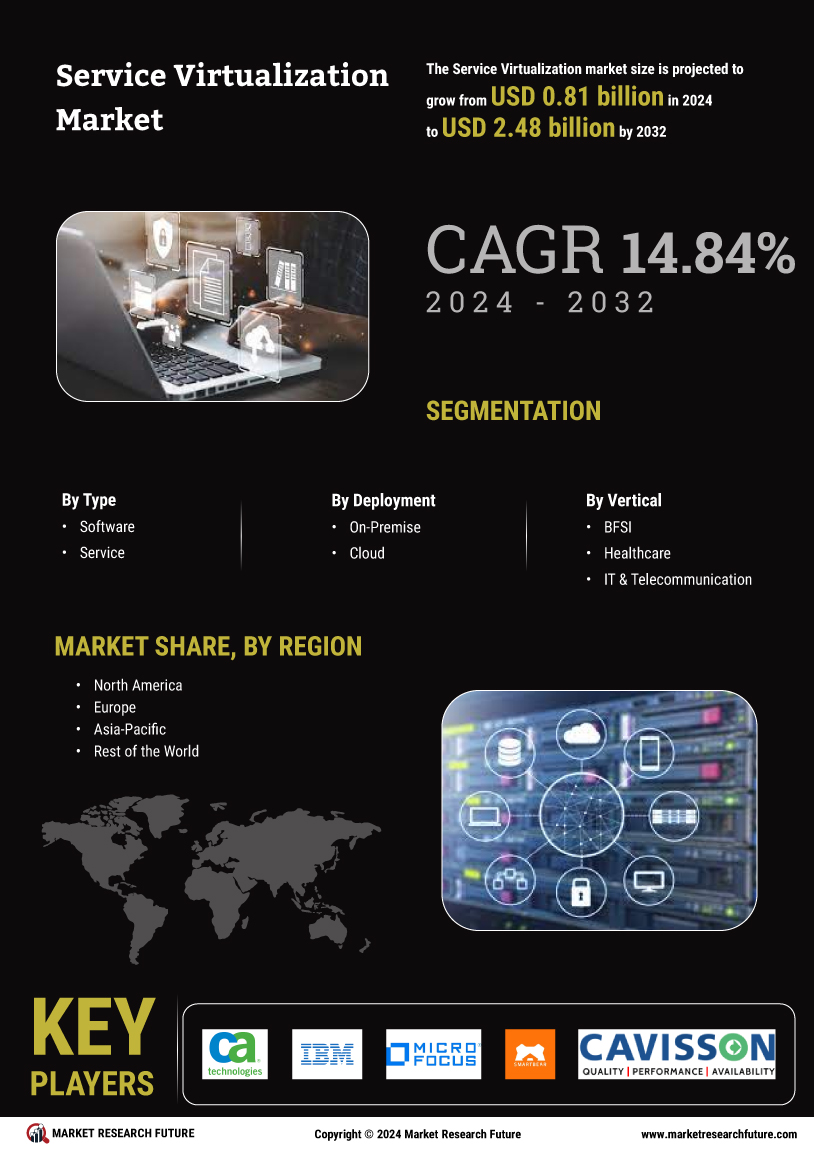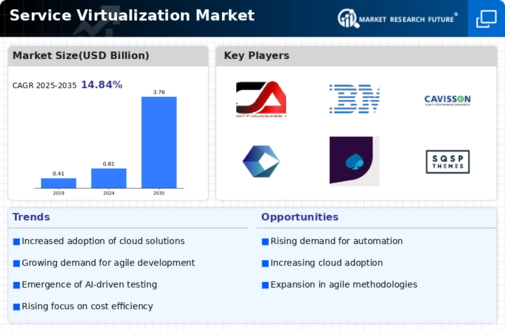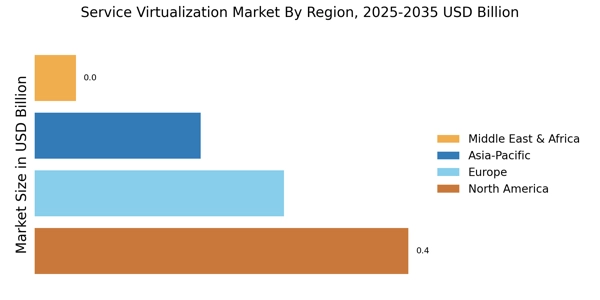Leading market players are investing heavily in research and development to expand their product lines, which will help the Service Virtualization Market grow even more. Market participants are also undertaking several strategic activities to expand their global footprint, with important market developments including new product launches, contractual agreements, mergers and acquisitions, higher investments, and collaboration with other organizations. The Service Virtualization industry must offer cost-effective items to expand and survive in a more competitive and rising market climate.
Manufacturing locally to minimize operational costs is one of the key business tactics manufacturers use in the global Service Virtualization industry to benefit clients and increase the market sector. The Service Virtualization industry has offered some of the most significant medical advantages in recent years. Major players in the Service Virtualization Market, including CA Technologies (US), IBM (US), Micro Focus (Formerly HPE) (US), SmartBear Software (US), Cavisson Systems (US), Cognizant (US), Wipro (India), Sogeti (France), SQS (Germany), Maveric Systems (India), Prolifics (US), and others, are attempting to increase market demand by investing in research and development operations.
Adam Kolawa, Jon Flower, and Marc Goroff's Parasoft Corporation, founded in 1987, located in Monrovia, California, United States of America, is an independent software in automated software testing and application security. Its products include C/C++, Jtest, dotTest, Insure++, Selenic, Virtualise, DTP, and Continuous Testing Platform. It develops automated defect prevention technologies which support automated defect prevention methodology. In November 2020, Parasoft, a US-based organization, partnered with Lattix Inc. They combined the Lattix Architect solutions and Parasoft's test cycles software and tools. It enables them to develop faster virtual service software.
Corsa Security, founded in 2013, and located in Ottawa, ON, Canada, is a software-based networking company expert who is also a service and security virtualization expert to revolutionize network security. It helps large enterprises, service providers, security service providers, and large network owners scale network security. In October 2020, Corsa Security, a US-based organization, expanded its network security and virtualization services operations to automate the FWaaS (Firewall-as-a-Service). The new solution enables the Service Providers and Managed Security Service Providers to offer a virtualized FWaaS. It replaced the need for other physical firewalls.


















Leave a Comment